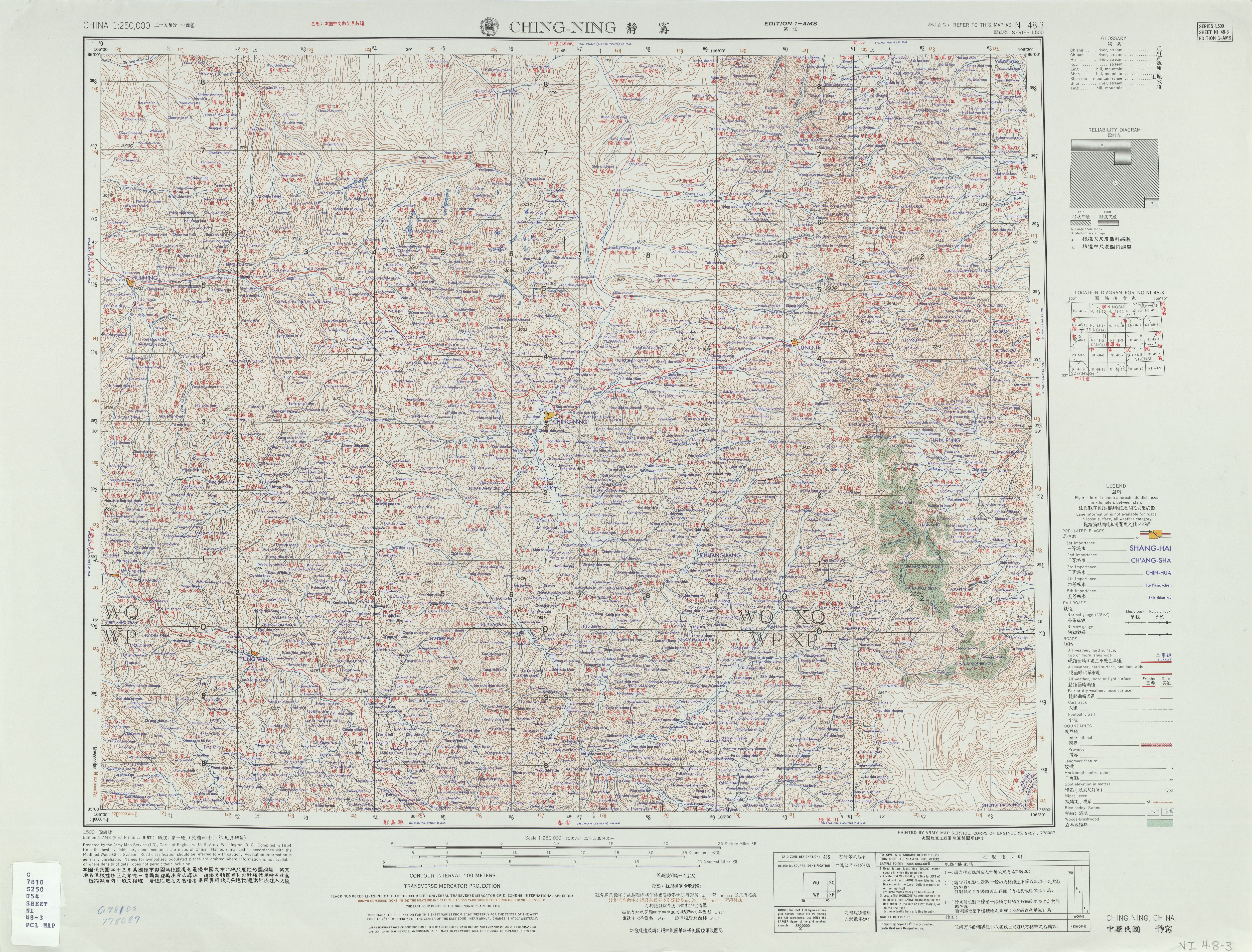|
Dian'an
Dian'an is a township of Longde County, Ningxia, People's Republic of China. In 2014 it had a population of 6,000. The township has jurisdiction over 10 administrative villages and 48 villager groups, with the townhall being located in Jiujie village (旧街村). Didian was originally part of Jingning County, Gansu Jingning County () is an administrative district in Gansu, China. It is one of 58 counties of Gansu. It is part of the Pingliang prefecture, with the city of the same name being the prefecture seat. Its postal code is 743400, and in 2006 its popul .... In May 1956, Dian'an was incorporated into Longde County. In October 1958, the name was changed to Qianfeng Commune, but renamed to Dian'an Commune in April 1959. In January 1984, the commune was changed into a township. Xueyang Village of Dian'an is an exclave of Ningxia in Gansu province, which was formed when Ningxia was split off Gansu. References Township-level divisions of Ningxia Longde County Enclaves i ... [...More Info...] [...Related Items...] OR: [Wikipedia] [Google] [Baidu] |
Longde County
Longde County (, Xiao'erjing: ﻟْﻮدْ ثِيًا) is a county under the administration of the prefecture-level city of Guyuan in the south of Ningxia Hui Autonomous Region of the People's Republic of China. Longde County is located in the southern part of Ningxia. It gets its name from the town of Long and the Deshun army. Historically, the county was under the control of Pingliang city in Gansu province. It borders the rest of Ningxia, as well as Shaanxi and Gansu provinces. It also connects the important northwestern cities of Xi'an and Lanzhou. To the north of the county is Guyuan, to the east is Pingliang, to the south is Jingyuan County, and to the west is Jingning County. Although Longde County is in the southern part of Ningxia, air temperature is usually lower than the surrounding areas, because Longde is, on average, 2000 meters above sea level. In addition, because the county is located in the northern foothills of the Liupan mountain range, there is relati ... [...More Info...] [...Related Items...] OR: [Wikipedia] [Google] [Baidu] |
Townships Of China
Townships (), formally township-level divisions (), are the basic level (fourth-level administrative units) of political divisions in China. They are similar to municipalities and communes in other countries and in turn may contain village committees and villages. In 1995 there were 29,502 townships and 17,532 towns (a total of 47,034 township-level divisions) in China. Much like other levels of government in mainland China, the township's governance is divided between the Communist Party Township Secretary, and the "county magistrate" (). The township party secretary, along with the township's party committee, determines policy. The magistrate is in charge of administering the daily affairs of government and executing policies as determined by the party committee. A township official is the lowest-level ranked official in the civil service hierarchy; in practice, however, the township party secretary and magistrate can amass high levels of personal power. A township government ... [...More Info...] [...Related Items...] OR: [Wikipedia] [Google] [Baidu] |
Ningxia
Ningxia (,; , ; alternately romanized as Ninghsia), officially the Ningxia Hui Autonomous Region (NHAR), is an autonomous region in the northwest of the People's Republic of China. Formerly a province, Ningxia was incorporated into Gansu in 1954 but was later separated from Gansu in 1958 and reconstituted as an autonomous region for the Hui people, one of the 56 officially recognised nationalities of China. Twenty percent of China's Hui population lives in Ningxia. Ningxia is bounded by Shaanxi to the east, Gansu to the south and west and Inner Mongolia Autonomous Region to the north and has an area of around . This sparsely settled, mostly desert region lies partially on the Loess Plateau and in the vast plain of the Yellow River and features the Great Wall of China along its northeastern boundary. Over about 2000 years an extensive system of canals (The total length about 1397 kilometers) has been built from Qin dynasty. Extensive land reclamation and irrigation projects h ... [...More Info...] [...Related Items...] OR: [Wikipedia] [Google] [Baidu] |
Jingning County, Gansu
Jingning County () is an administrative district in Gansu, China. It is one of 58 counties of Gansu. It is part of the Pingliang prefecture, with the city of the same name being the prefecture seat. Its postal code is 743400, and in 2006 its population was 463,400 people. Its county seat is Chengguan. The county government's jurisdiction is over 19 townships, 392 villages, 2320 other communities and 4 neighbourhoods. History There is evidence of Neolithic settlements in Jingning. The area was also inhabited during most of Chinese history, including the Three Kingdoms period. Sites have been dated to the Qin Dynasty. During the Second Sino-Japanese War, the area was evacuated (1940). The Communist Long March entered Jingning on September 10, 1935. Mao Zedong set up a headquarters in Shi Pu. The Communists left the next month. However, the county was taken under Communist control by the People's Liberation Army during the Chinese Civil War. PLA troops entered on August 6, 1949. ... [...More Info...] [...Related Items...] OR: [Wikipedia] [Google] [Baidu] |

